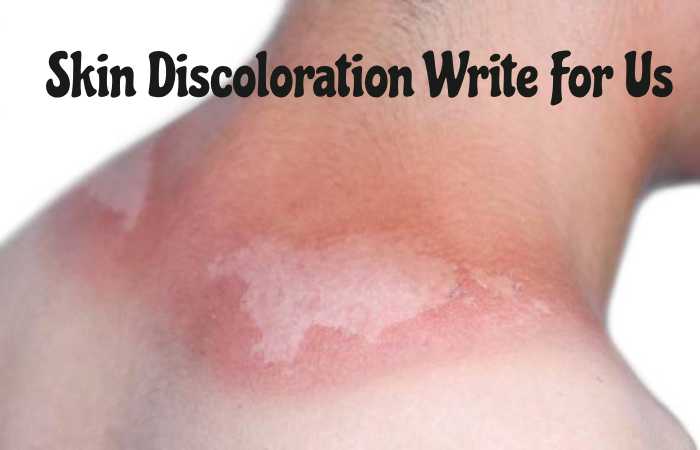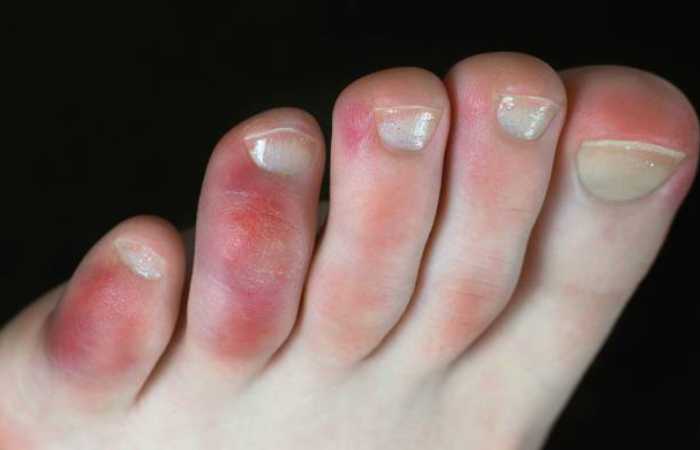
Skin Discoloration Write For Us
Skin discoloration refers to any change in the natural color of the skin. It can manifest as darkening (hyperpigmentation) or lightening (hypopigmentation) of the skin. Skin discoloration can occur for various reasons, including:
Hyperpigmentation:
- Melasma: This condition results in brown or gray-brown patches on the face, often associated with hormonal variations, such as pregnancy or birth control use.
- Post-Inflammatory Hyperpigmentation: It occurs after skin inflammation or injury, such as acne, cuts, or burns, and can leave dark marks or patches.
- Sunspots (Solar Lentigines): Prolonged sun exposure can lead to dark spots, particularly on sun-exposed areas like the face, hands, and arms.
- Freckles are small, flat, and light to dark brown spots that are often genetic and more pronounced after sun exposure.
Hypopigmentation:
- Vitiligo: Vitiligo is a skin condition that reasons the loss of skin pigment, consequential in white patches on the skin. It occurs when melanocytes (pigment-producing cells) are destroyed.
- Albinism: A genetic condition that causes the complete absence or significant reduction of melanin, leading to very light or white skin, hair, and eyes.
- Tinea Versicolor: This fungal infection can cause hypopigmented or hyperpigmented patches on the skin, typically on the chest, back, and shoulders.
Other Causes of Skin Discoloration:

- Aging: As people age, changes in skin color can occur, such as the development of age spots (liver spots) and overall uneven pigmentation.
- Medications: Some medications can cause skin discoloration as a side effect. For example, certain antibiotics, antimalarial drugs, and chemotherapy agents may lead to hyperpigmentation or hypopigmentation.
- Chemical Exposure: Exposure to certain chemicals or irritants can cause skin discoloration or chemical burns.
- Skin Conditions: Skin conditions like eczema, psoriasis, and lichen planus can result in changes in skin color as a part of their symptoms.
- Scars: Scars from injuries or surgeries can be lighter or darker than the surrounding skin, leading to visible discoloration.
Treatment options for skin discoloration depend on the underlying cause. They may include topical treatments, laser therapy, chemical peels, and, in some cases, medical interventions like corticosteroid creams or skin grafting.
How to Submit your Article to Health Remodeling ?
We look forward to your contribution to the Health Remodeling . Let us know your thoughts at contact@healthremodeling.com
Why Write for Health Remodeling – Skin Discoloration Write For Us

Writing for Health Remodeling can give massive exposure to your website for customers looking for Skin Discoloration.
Health Remodeling presence is on Social media and will share your article for the Skin Discoloration related audience. You can reach out to Skin Discoloration enthusiasts.
Search Terms Related to Skin Discoloration Write For Us
- Mammals
- Organ
- Integumentary system
- Ectodermal tissue
- Muscles
- Bones
- Ligaments
- Internal organs
- Proto-Indo-European
- Epithelium
- Proliferating
- Touch
- Keratinocytes
- Stratum corneum
- Stratum lucidum
- Stratum granulosum
- Stratum spinosum
- Stratum basale
- Epidermis
- Connective tissue
Search Terms for Skin Discoloration Write For Us
Guest post Skin Discoloration
Skin Discoloration Submit Post
Skin Discoloration submit an article
become a guest blogger Skin Discoloration
Skin Discoloration guest author
writers wanted Skin Discoloration
Article Guidelines on Health Remodeling – Skin Discoloration Write For Us
- We at Health Remodeling welcomes fresh and unique content related to Skin Discoloration.
- Health Remodeling allow a minimum of 500+ words related to Skin Discoloration.
- The editorial team of Health Remodeling does not encourage promotional content related to Skin Discoloration.
- For publishing article at Health Remodeling email us at contact@healthremodeling.com
- Health Remodeling allows articles related to diet, makeup, cosmetics and many more.
Related Pages:
Simvastatin Side Effects Write For Us
Shoulder Pain Write For Us
Rice Carbs Write For Us
Popcorn Carbs Write For Us
Neti Pot Write For Us
